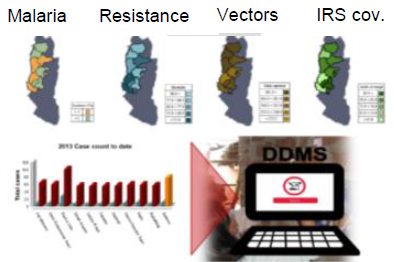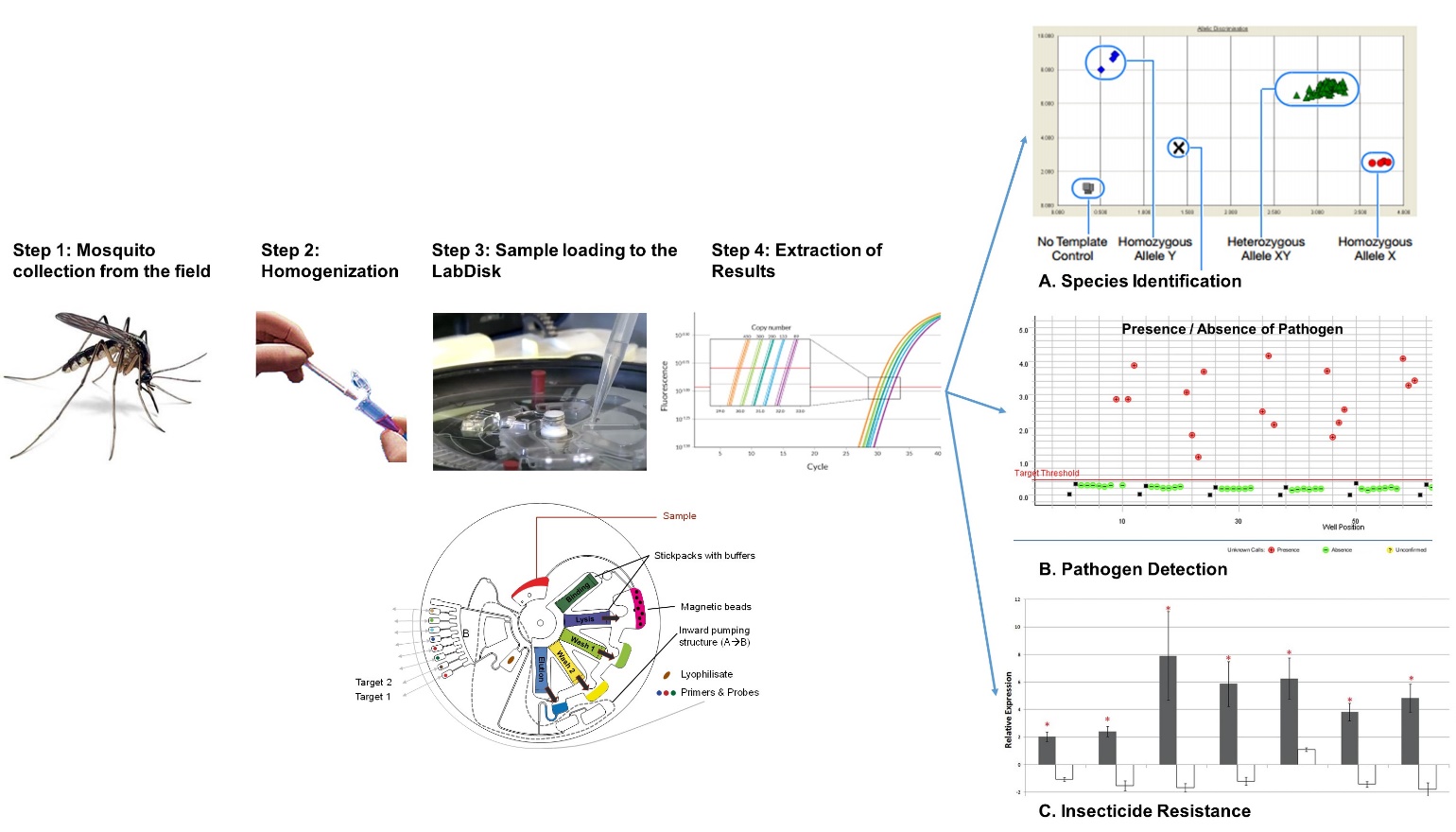The project
 |
Institut Agro (SupAgro) France
|
|
** Third country, no EU funding contribution requested |
Academic Canada
|
 |
Industrial partner (SME) Belgium
|
 |
Academic Spain
|
Το promote integration of knowledge, dissemination, uptake to end-users and ensure sustainability of new tools and strategies.
The objectives are:
To perform:
- analysis of legal and regulatory pathways for biopesticides and policy guidance
- cross disciplinary interactions and extensive training and pedagogical support
- socioeconomic analysis of acceptability and uptake issues for novel products, tools and strategies, including stakeholders, farmers and consumers.
An effective communication system of data and guidelines
The “GAME” is a user-friendly modern ICT platform that employs interactive ways of communicating guidelines and exemplifying good practices of successful insecticide resistance management use in the health sector, will be also employed in the DMC-MALVEC project. The GAME incorporates the entomological data that will be obtained and produced by the LabDisk and the DDMS, respectively, to (1) educate end user communities about the usefulness and value of these data and (2) teach the end users how to best understand these data in terms of vector control and insecticide resistance management practices.

Data Management system to integrate and organize entomological data
The Disease Data Management System (DDMS) is a software / customized database that has been already successfully tested and used by some disease control programmes, to manage vector control data and convert information into customized reports, maps and graphs, providing a versatile and comprehensive picture of entomological and operational data for programme members and stakeholders.

A diagnostic platform to monitor mosquito populations
We will develop a fully integrated and automated multiplex vector-diagnostic platform (LabDisk) for monitoring the species ID, the infection status of mosquitoes and the insecticide resistance profile of malaria vector populations. For the first time in an operational setting, the LabDisk will enable the capture of novel, operationally relevant RNA markers, such as those indicating detoxification-based resistance, that can currently only be analysed in centralised labs using sophisticated equipment. The system will provide sample-to-answer determinations, which will substantially facilitate the uptake of protocols in target countries. It will be also capable of analysing pools of mosquitoes (as well as individuals) to perform genotyping at substantially lower cost, compared to the individual assays (PCR, ELISA, TAQMAN, microscopic examinations) that are currently extensively used in Africa. This ensures that the LabDisk system will provide relevant, timely data that is operationally applicable to resource poor malaria control settings.
Malaria, a major public health challenge
Malaria is a life-threatening disease causing more than 500,000 deaths every year in sub-Saharan Africa, mostly in children under five and pregnant women. Prevention of the disease is best achieved by vector control which, today in Africa, relies on the use of insecticides. Monitoring mosquito vector populations is an integral component of most vector control programmes and a prerequisite for effective interventions. Several individual methods are used for this task, however, in resource poor malaria endemic countries, there are many obstacles to the uptake of these protocols, as well as further challenges in organizing, interpreting and communicating vector control data.
To integrate the tools, outputs and knowledge generated in WP2-5 into data-driven evolutionary frameworks for effective and sustainable IPM. We will predict and devise the optimal use and combination of existing and novel, setting-specific control tools, with a specific emphasis on resistance evolution and its prevention, to enable a wide range of end-users and local policy makers to advise on optimal, site-specific control measures and pest intervention strategies.
The objectives are:
- To develop a multitrophic model of IPM to account for synergistic or antagonistic effects of plant resistance traits;
- To incorporate multiple plant and pest phenotypes to investigate the evolutionary dynamics of resistance-associated loci;
- To devise optimal site- and species-specific pest management schemes;
- To iteratively validate model predictions against experimental data in at least one model system.












